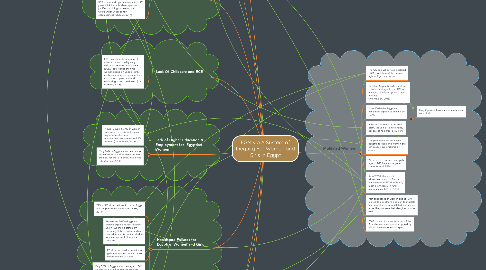FGM via A System of Inequity For Women and Girls In Egypt
by D Simone


1. Access to Technology
1.1. The benefits of internet and technology are accessible to men at a much higher rate than women, leaving women behind in Internet access and mobile phone ownership.
1.2. Only 55.3% of Egyptian women have access to the internet; 92% of these women live in urban areas, leaving rural women with almost no access (UNFP 2018)
2. Culture and Faith: Egyptian Women and Girls
2.1. Husbands’ preferences for circumcised women and the prevention of adultery were among the most cited reasons by women aged 15-49 for supporting the practice (Egypt: DHS, 2014)
3. Gender Based Violence (GBV) on Egyptian Women
3.1. In countries where women's rights are marginalized, women are disproportionately subjected to gender-based or sexual violence, and may be forced to leave their homes. (UN WOMEN, 2018)
3.2. 36% of married Egyptian women 15-49 years think that a husband/partner is justified in hitting or beating his wife/partner under certain circumstances (UNICEF, 2017)
4. Lack Of Childcare and ECE
4.1. ECE: Investments in accessible, affordable and quality early childhood education and care (ECEC) can reduce the time women spend on unpaid care, enabling women to increase their access to employment and enhancing school readiness (UN Women, 2018)
5. Lack of Higher Education & Employment for Egyptian Women
5.1. In rural Egypt, 65.7% of women with aged 15-24 do not persue higher education nor employment, compared to 4.6% of men. (UN Women, 2018)
5.2. Only 26% of Egyptian women pursue higher education after marriage, less than 2% for those in poor, rural areas (UN Women, 2018)
6. Healthcare Failures for Egyptian Women and Girls
6.1. 72% of FGM procedures in urban Egypt are still performed by doctors. (DHS, 2014)
6.2. September 2012—Egyptian gynecologists and obstetricians union launched a statement declaring FGM is not a medical procedure and is not included in any medical curriculum as a practice
6.3. FGM has no health benefits for girls and women but can cause severe trauma or death.
6.4. Only 52% of Egyptian women aged 15-49 married or in a union freely make their own decisions about sexual relations, contraceptive use and health care.
7. Poverty of Egyptian Women and Girls
7.1. Women in poor agricultural villages in Upper Egypt are often socially considered to be inferior to males and to their husbands (DHS, 2014)
7.2. 22% of urban Egyptian women live in conditions where they lack at least one of their basic living or housing needs. 46% of rural Egyptian women lack at least one. (UN WOMEN, 2018)
7.2.1. As of 2017, finances flowing out of Egypt were 2.5 times the amount of aid flowing in, and gender allocations paled in comparison. UNICEF, 2017
8. Mutilated Women
8.1. The UN and WHO have declared FGM a violation of the human rights of girls and women.
8.2. Egyptian Capacity Building of Law Enforcement agents on FGM is minimal, little to no government funding (UN Women, 2018)
8.3. June 2008—the Egyptian Parliament agreed to criminalize FGM.
8.3.1. Only 2 people have subsequently been convicted.
8.4. FGM has no basis in the core Islam, including Islamic Sharia, nor any of its partial provisions
8.5. The procedure has no health benefits for girls and women but can cause severe trauma or death.
8.6. 92 per cent of women and girls aged 15-49 have undergone some form of FGM
8.7. As of 2018, there is still widespread support for the continuation of FGM in Egypt, most prominently in rural communities. (UNFP, 2018)
8.8. Past experience of women about FGM is related to a mother's decision to mutilate her daughters since mutilated women are more likely to have their daughters cut as well.
8.9. FGM is part of the social fabric of the Egyptian community and is upheld by beliefs associated with religion.
9. Gender Inequity
9.1. Women do 2.6 times the unpaid care and domestic work that men do in Egypt. (UN Women, 2018)
9.2. As of September 2017, women hold just 23.7% of parliamentary seats (UNDP, 2017)
9.3. Men hold inequitable views about gender roles and rights (IMAGES, MENA, 2015)
9.3.1. Between two-thirds and three-quarters of men support the notion that a woman’s most important role is to take care for the household.
